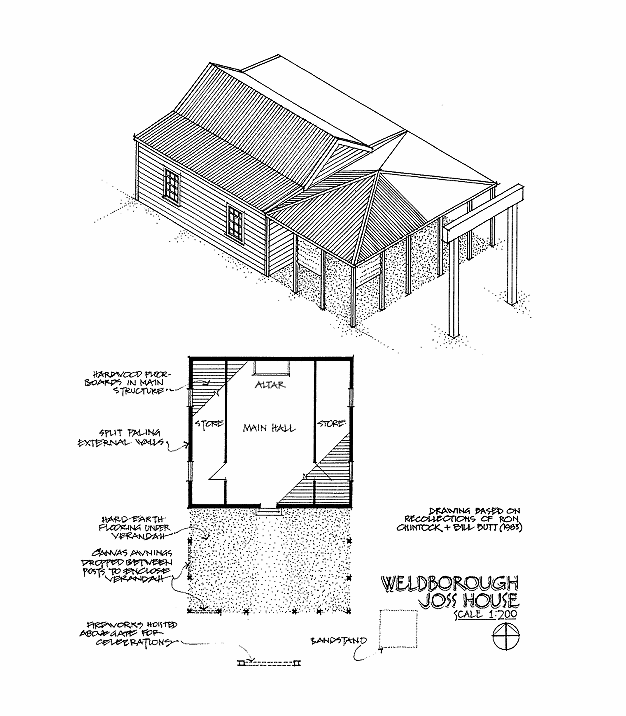|
Weldborough
Joss House
Weldborough
Joss House was erected in c.1880 when Weldborough was the main regional
centre serving a population of 500-1000 Chinese. The
Chinese population diminished on the tinfields c. 1910-1920 due to the
decline in tin mining, restrictive immigration and old age.
By
c.1930 only one full Chinese, Hee Jarm, remained at Weldborough.
He became the caretaker of the Joss House and fearing of its safety
appealed to James Chung-Gon of Launceston for assistance. Between them and the cooperation of the Launceston City Council in 1934
the contents of the Joss House were transported to the Launceston Museum
where it continued to function as a place of worship as well as a museum
exhibit.
The
Joss House was a weatherboard building with a corrugated iron roof and a
large open sided covered area in front of the entrance but there is no
record of the building being survived but only a sketched of the Joss
House (below) that has been drawn from descriptions and dimensions given by
first-hand oral sources. This site was
significant as it is the most important Joss House in the North East and
for its relationship with the collection in the Queen Victoria Museum.
The
Joss House is a place of worhip which was integral to the Chinese way of
life in Tasmania and there were at least five Joss Houses in the North
east but the one at Weldborough was the longest lived.
 |
|
_______________________________________________________________________
Artlcle
taken from: "Tasmaia's Chinese Heritage: An
Historical Record of Chinese Sites in Norht East Tasmania" by Helen
Vivian
Australian
Heritage Commission
Queen
Victoria Museum and Art Gallery
1985
|
|